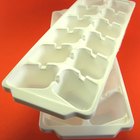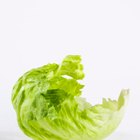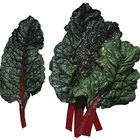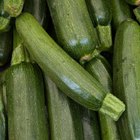
Spinach represents something of a conundrum for a lot of children. On the one hand, Popeye likes it, and that's pretty cool. On the other hand, once it shows up on a plate, most kids seem to regard it with grave suspicion. Admittedly, to the untutored eye, a "mess of greens" just looks like a mess. As we grow older, most of us come to appreciate spinach's versatility, whether delicate baby spinach or mature leaves.
About Spinach
Spinach is one of the most widely consumed of leafy green vegetables. It is native to Central Asia, and from there has spread throughout the world. Spinach is a cold-weather crop, flourishing best in the spring and fall. During the summer's heat it is prone to bolting, or going to seed. Spinach is highly productive and has a more subtle, neutral flavor than most greens. This makes it unusually versatile, and adaptable to any cuisine.
Mature Spinach
The mature leaves of spinach are generally harvested when three to six inches long. They may be smooth or crinkled, depending on the cultivar chosen. Most cultivars produce leaves that are too thick for salad use at maturity, with a chewy texture. For this reason, mature leaves are generally cooked. Preparation consists largely of rinsing and washing the spinach well enough to remove the sandy grit that accumulates in the leaves during cultivation. Once the leaves are cleaned, cooks pinch off the stringy stems to prepare the leaves for cooking.
Baby Spinach
Baby spinach, as the name implies, is standard spinach leaves harvested when they are young and tender. Some cultivars have a slow growth habit, which allows them to be harvested as baby spinach for an extended period. Baby spinach is typically harvested when the leaves are approximately 1 to 1 1/2 inches in diameter. Baby spinach is delicate enough in flavor and texture to make an excellent salad green, but can also be cooked. It is usually sold prewashed and ready to use, and the stems are fine enough that they do not need to be removed.
Eating Spinach
The delicate leaves of baby spinach are most commonly used in green salads, either as part of a mesclun mixture or the main ingredient of a spinach salad. They can also be combined with other baby greens or sprouts to make a salad, or as garnishes on another food. Mature spinach is generally cooked. It can be sauteed in oil or butter and served as a side vegetable with most meals. It is also widely used in fillings for pasta and savory pies, most famously the Greek spanakopita. Spinach can be blanched and frozen for long storage.
Related Articles

How to Steam Cabbage in the Microwave

Types of Taro
How to Clean and Cook Broccoli Rabe

Cooking Kale Greens

How to Parboil Artichokes

How to Cook Kale in a Pan With Butter ...
How to Boil Chayote
Substitutes for Frisee Lettuce

What Are Basil Sprigs?

How to Juice a Daikon Radish

How to Wilt Spinach for Cooking

How to Cook Fresh Turnip Greens

How to Freeze & Store Purslane
The Best Way to Cook Large Artichokes

How to Cook Iceberg Lettuce

How to Make Steamed Spinach Taste Better

How to Cook Swiss Chard Italian Style

How to Eat Kohlrabi

How to Clean Zucchini
What Does Jicama Taste Like & What Is ...
References
- "On Food and Cooking: The Science and Lore of the Kitchen"; Harold S. McGee; 2004
- Clemson University Cooperative Extension; Spinach; Powell Smith, et al.; April 2003
- University of Illinois Extension; Watch Your Garden Grow; Spinach
Writer Bio
Fred Decker is a trained chef and prolific freelance writer. In previous careers, he sold insurance and mutual funds, and was a longtime retailer. He was educated at Memorial University of Newfoundland and the Northern Alberta Institute of Technology. His articles have appeared on numerous home and garden sites including GoneOutdoors, TheNest and eHow.
Photo Credits
Jupiterimages/Comstock/Getty Images